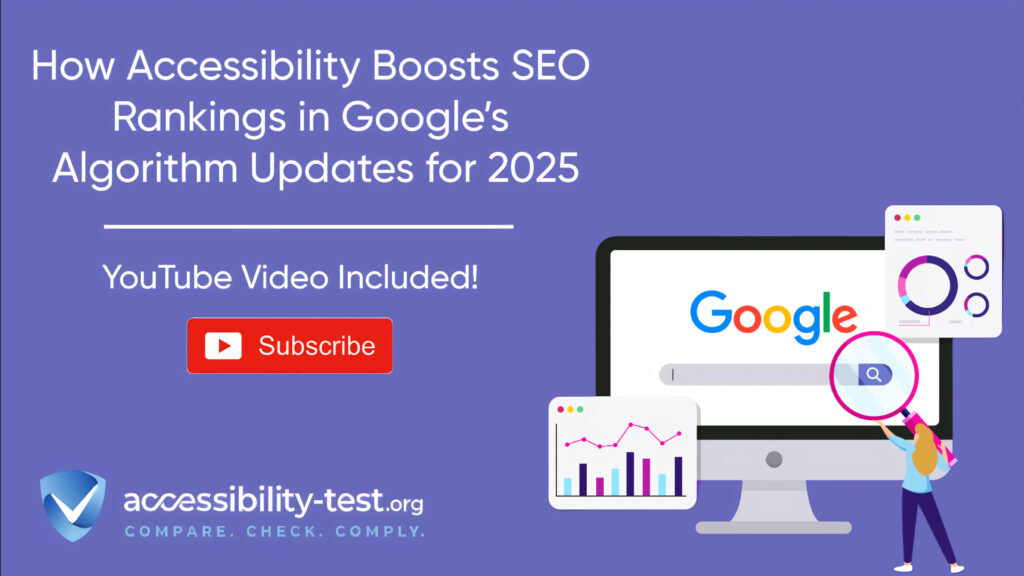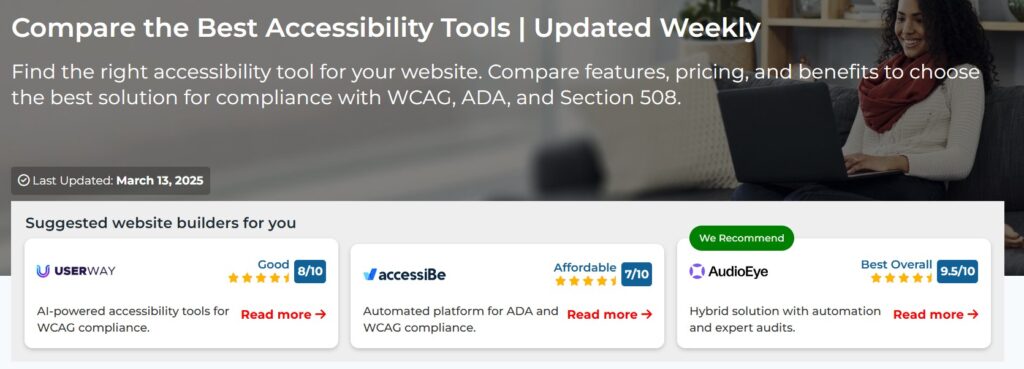
Google’s Algorithm Updates for 2025
The connection between website accessibility and search rankings is now stronger than ever in 2025. Google’s latest updates directly reward websites that work better for all users, including those with disabilities. Recent data shows accessible websites get 37% more traffic from search engines and keep visitors engaged longer, with bounce rates 41% lower than less accessible sites. With the European Accessibility Act (EAA) fully rolling out in June 2025, websites with strong accessibility features are seeing up to 35% better visibility in search results.
Technical Overlaps Between SEO & Accessibility
When you build your website with accessibility in mind, you’re also building it in a way that search engines can better understand. Google’s crawlers work similar to screen readers—they both need clear structure and context to make sense of your content.
Here are key areas where accessibility directly boosts your SEO:
Alt Text for Images: Adding descriptive alt text helps people using screen readers understand what’s in pictures. These same descriptions help search engines understand your visual content, improving image search rankings and overall SEO.
Semantic HTML Structure: Using the right HTML tags (like <header>, <nav>, <main>) makes your site easier to navigate for people using assistive technologies. These same tags help search engines understand your site structure, which can improve your rankings.
Content Organization: Clear headings and logical content flow help all users find information quickly. This organization also helps search engines better understand and index your content.
Page Speed: Accessible websites often load faster because they’re built with clean code. Page speed is a direct ranking factor for Google, so this accessibility feature directly boosts SEO.
Link Text Quality: Descriptive link text (instead of “click here”) helps screen reader users understand where links will take them. This same practice helps search engines understand your content relationships.
Google’s 2025 algorithm now actively checks for these accessibility features when determining rankings. This means improving your website’s accessibility isn’t just about avoiding legal issues—it’s about gaining a big advantage in search results.
Impact of Proper Headings on Crawl Efficiency (+41%)
One of the strongest connections between accessibility and SEO is how proper heading structure affects crawl efficiency. Recent data shows that websites with proper heading hierarchy can see up to a 41% improvement in how efficiently search engines crawl their pages.
Heading tags (H1, H2, H3, etc.) serve two important purposes:
- For users with screen readers or cognitive disabilities, headings create a clear roadmap of your content and allow them to navigate more easily.
- For search engines, headings signal the importance and relationship of different content sections, helping Google understand what your page is about.
When you structure your headings properly—using one H1 tag for the main title, followed by H2 tags for main sections, and H3 tags for subsections—you’re creating both an accessible experience and an SEO-friendly page structure.
Here’s why proper heading structure works so well:
Improved Content Scanning: Both human readers and search engines scan headings to understand content. Clear headings make this process more efficient.
Enhanced Navigation: Proper headings allow screen reader users to jump between sections. Similarly, search engines use headings to navigate and index content more effectively.
Content Hierarchy Signals: Headings tell search engines which parts of your content are most important, influencing how your page ranks for various keywords.
Reduced Bounce Rates: When users can quickly find what they’re looking for through clear headings, they stay longer on your site—a positive signal to Google.
To maximize this benefit, make sure each page has:
- Only one H1 tag that matches the main topic
- H2 tags for each major section
- H3 tags for subsections
- A logical nesting pattern (never skip levels, like jumping from H2 to H4)
This structured approach not only helps people using screen readers navigate your content but also helps search engines crawl your site more efficiently, potentially improving your rankings in Google’s 2025 algorithm.usinesses in these industries will need to make significant changes to how they design their digital products and services before the 2025 deadline.
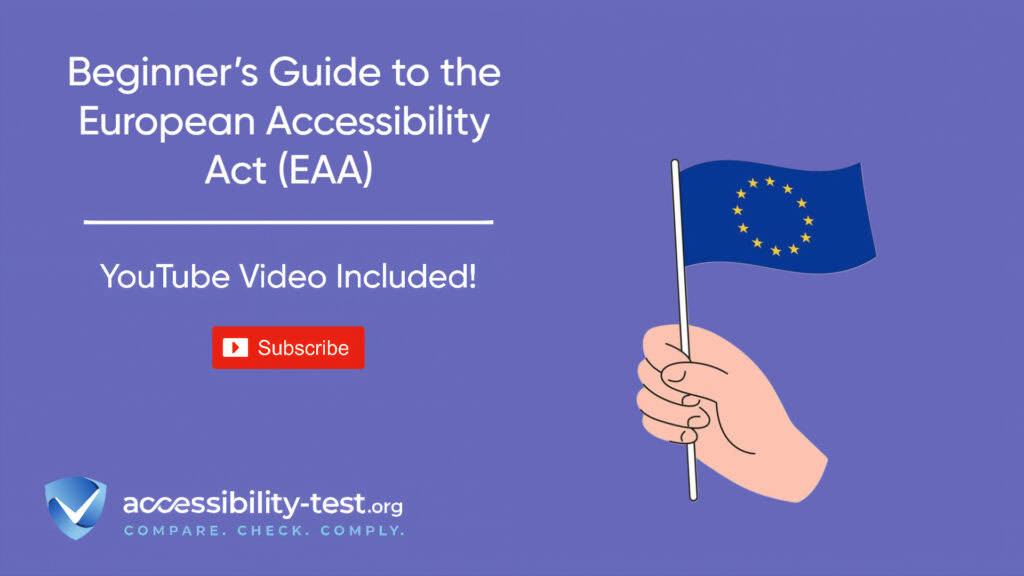
Core Web Vitals Connection to Accessibility Scores
Google’s Core Web Vitals have become crucial ranking signals, and there’s a direct connection between these metrics and website accessibility. When you improve accessibility, you often automatically improve your Core Web Vitals scores, which can boost your search rankings.
Core Web Vitals measure three aspects of user experience:
Largest Contentful Paint (LCP)
How quickly the main content of a page loads. Accessible websites with clean, efficient code and optimized images tend to load faster, improving this metric.
First Input Delay (FID)
How quickly a page becomes interactive. Accessible websites built with proper JavaScript practices and keyboard navigation are often more responsive.
Cumulative Layout Shift (CLS)
How stable the page is as it loads. Accessible websites with proper structure and responsive design typically have less visual shift.
The connection works both ways—improving accessibility often improves Core Web Vitals, and improving Core Web Vitals often enhances accessibility. For example:
- Simplifying page layouts for better accessibility reduces CLS
- Optimizing images with alt text improves both accessibility and LCP
- Enhancing keyboard navigation improves accessibility and FID
Google’s 2025 algorithm update places even greater emphasis on these overlapping factors. Websites that score well on both accessibility and Core Web Vitals are seeing higher rankings, as Google recognizes these signals as indicators of high-quality user experiences.
To improve both your Core Web Vitals and accessibility scores:
- Optimize images (compress them and add alt text)
- Minimize JavaScript that blocks rendering
- Ensure text remains visible during font loading
- Use proper contrast ratios for text
- Implement responsive design for all screen sizes
- Ensure all interactive elements work with keyboard navigation
By focusing on these dual-benefit improvements, you can enhance both accessibility and SEO performance at the same time.
Google’s Emphasis on Mobile-Friendly Design
In 2025, Google continues to prioritize mobile-friendly websites in its search rankings. The company has maintained its mobile-first indexing approach, meaning it primarily uses the mobile version of your website for ranking and indexing.
This focus on mobile experience directly connects to accessibility in several important ways:
Screen Size Adaptation
Mobile-friendly websites automatically adjust to different screen sizes, which helps users with visual impairments who may need to zoom in or use larger text.
Touch-Friendly Elements
Buttons and links that are easy to tap on mobile devices are also easier to use for people with motor disabilities.
Simplified Navigation
Mobile-friendly sites typically have clearer, more straightforward navigation, which benefits users with cognitive disabilities and improves overall usability.
Faster Loading
Mobile optimization often leads to faster page loads, which helps all users but especially those with slower internet connections or older devices.
Google’s 2025 algorithm update has strengthened the connection between mobile-friendliness and accessibility, with mobile-unfriendly websites facing significant penalties in search rankings. Data shows that websites not optimized for mobile experience see “significantly lower visibility in search results.”
To ensure your website meets Google’s mobile-friendly requirements while enhancing accessibility:
Responsive Design
Implement responsive design that adapts to all screen sizes rather than creating separate mobile and desktop versions.
Touch Targets
Make buttons and links large enough (at least 44×44 pixels) to be easily tapped on mobile screens.
Font Sizing
Use readable font sizes (minimum 16px) that don’t require zooming on mobile devices.
Avoid Flash
Flash isn’t supported on most mobile devices and creates accessibility barriers.
Test Thoroughly
Use Google’s Mobile-Friendly Test to check your pages regularly.
The good news is that once you make necessary changes to become mobile-friendly, your rankings should improve relatively quickly. This provides a competitive advantage over websites that haven’t yet adapted to mobile-first design principles.
Google clearly states in its mobile-first approach: “This change will affect mobile searches in all languages worldwide and will have a significant impact on our search results”. With mobile devices accounting for 55.45% of all United States website traffic in November 2024, ignoring mobile optimization means missing out on both accessibility benefits and search ranking opportunities across multiple EU countries. A company could potentially face separate fines in each country where it fails to meet the requirements.
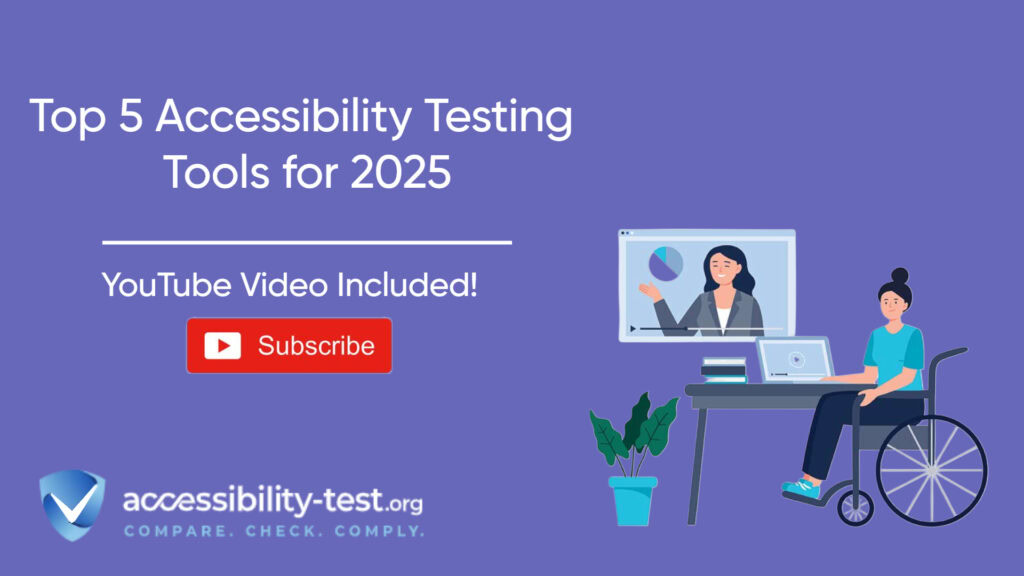
Accessibility Features That Boost Rankings
Beyond the technical overlaps already discussed, several specific accessibility features have been shown to directly impact search rankings in Google’s 2025 algorithm update. Implementing these features can provide a double benefit: making your site more usable for people with disabilities while also improving your search visibility.
Descriptive Link Text
Using descriptive anchor text for links (instead of generic phrases like “click here” or “read more”) helps both screen reader users and search engines understand where the link leads. Google uses link text as a ranking signal to understand content relationships between pages.
Proper Color Contrast
Ensuring sufficient color contrast between text and background makes content readable for people with visual impairments. Google’s 2025 algorithm now includes contrast analysis as part of its user experience evaluation, as poor contrast can negatively impact readability for all users.
Video Transcripts and Captions
Adding transcripts and captions to video content makes it accessible to deaf or hard-of-hearing users. This text content is also indexed by search engines, increasing the keyword relevance of your page and providing more opportunities to rank.
Keyboard Navigation
Making sure all interactive elements on your site are accessible via keyboard helps users with motor disabilities who can’t use a mouse. Google’s crawlers also primarily navigate sites in a keyboard-like fashion, so this improvement helps them access your content more effectively.
ARIA Landmarks
Properly implemented ARIA (Accessible Rich Internet Applications) landmarks help screen readers identify different sections of your page. These landmarks also help search engines understand your page structure, contributing to better indexing and ranking.
Form Labels and Instructions
Clearly labeled forms with helpful instructions make them usable for people with various disabilities. Well-structured forms also tend to have higher completion rates, reducing bounce rates and sending positive engagement signals to Google.
By implementing these accessibility features, you’re not only creating a more inclusive website but also aligning with Google’s increasing focus on user experience as a ranking factor in 2025.
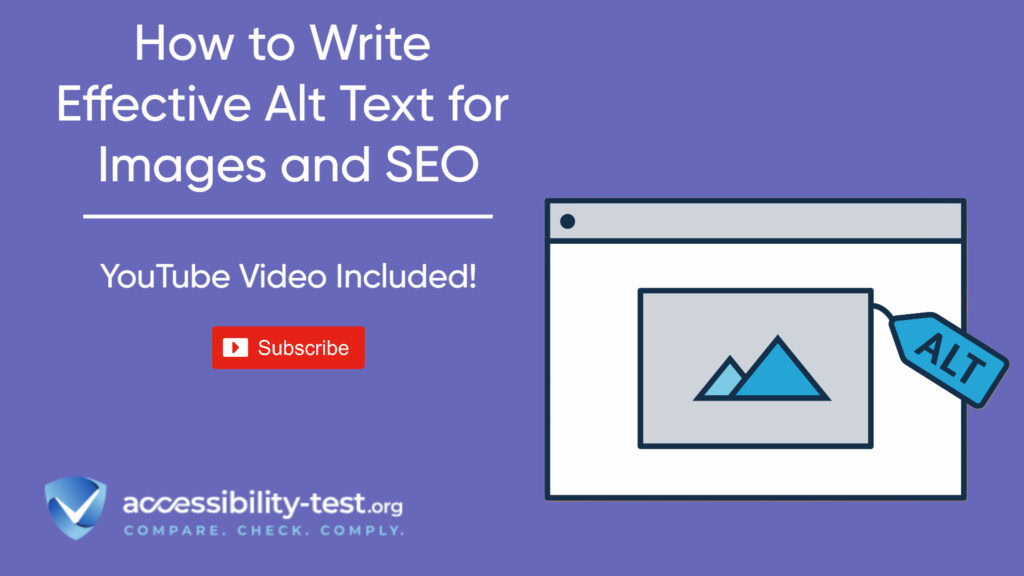
WCAG Compliance and SEO Benefits
The Web Content Accessibility Guidelines (WCAG) serve as the international standard for web accessibility. Following these guidelines not only helps you create an accessible website but also provides significant SEO benefits in Google’s 2025 algorithm environment.
WCAG is built around four core principles, known as POUR:
Perceivable
Information must be presentable to users in ways they can perceive. This includes providing text alternatives for non-text content, captions for videos, and content that can be displayed in different ways.
Operable
User interface components and navigation must be operable. This includes making all functionality available from a keyboard, giving users enough time to read content, and not designing content in ways that could cause seizures.
Understandable
Information and operation of the user interface must be understandable. This includes making text readable, making content appear and operate in predictable ways, and helping users avoid and correct mistakes.
Robust
Content must be robust enough to be interpreted reliably by a wide variety of user agents, including assistive technologies. This includes maximizing compatibility with current and future tools.
Each of these principles directly connects to aspects of SEO that Google’s algorithm values in 2025:
- Perceivable content is more likely to be properly indexed and understood by search engines
- Operable interfaces lead to better user engagement metrics, which influence rankings
- Understandable content results in lower bounce rates and higher time-on-site
- Robust code creates faster-loading pages and better technical SEO
Google’s algorithm updates in 2025 have increasingly aligned with WCAG standards, with websites that meet WCAG 2.1 AA level requirements seeing significant ranking benefits. This alignment makes sense from Google’s perspective—WCAG-compliant websites generally provide better user experiences for everyone, which aligns with Google’s core mission of delivering the most useful, high-quality content to searchers.
To leverage this connection:
- Audit your website against WCAG 2.1 AA standards
- Prioritize fixing issues that impact both accessibility and SEO (like missing alt text, improper heading structure, etc.)
- Document your accessibility improvements, as this can be valuable for demonstrating compliance
- Regularly test your site with both automated tools and real users with disabilities
By working toward WCAG compliance, you’re simultaneously improving your website’s accessibility and positioning it for better performance in Google’s search results.
The Business Case for Accessibility and SEO
Beyond the technical benefits, there’s a clear business case for investing in accessibility improvements that boost SEO. This section explores the tangible returns that businesses can expect when they prioritize accessibility in their web strategy.
Expanded Market Reach: According to the World Health Organization (WHO), approximately 1.3 billion people worldwide—about 16% of the global population—live with some form of disability. By making your website accessible, you’re opening your business to this significant market segment while simultaneously improving your search visibility.
Reduced Legal Risk: As accessibility laws continue to evolve globally, with measures like the European Accessibility Act taking full effect in June 2025, businesses face increasing legal risks for non-compliant websites. Investing in accessibility now reduces this risk while also improving SEO—a dual benefit that makes financial sense.
Improved Conversion Rates: Accessible websites are easier for everyone to use, not just people with disabilities. This improved usability translates to better conversion rates across all user segments. Data shows that accessible websites can drive up to 37% higher organic traffic and reduce bounce rates by 41%, directly impacting your bottom line.
Competitive Advantage: With Google’s 2025 algorithm updates giving preference to accessible websites, businesses that prioritize accessibility gain a competitive edge in search rankings. Being ahead of competitors in search results means more visibility, more traffic, and ultimately more revenue.
Brand Reputation: Consumers increasingly favor businesses that demonstrate social responsibility. A commitment to web accessibility signals that your brand values inclusion and equality, which can enhance your reputation and customer loyalty.
Cost Efficiency: Integrating accessibility from the beginning of website development is much more cost-effective than retrofitting an existing site. Similarly, building SEO and accessibility together saves resources compared to treating them as separate initiatives.
The data clearly supports this business case: websites with robust accessibility features now experience up to 35% better visibility in search results compared to those that neglect these elements. With Google’s algorithm increasingly valuing user experience signals, this advantage is likely to grow even stronger throughout 2025 and beyond.
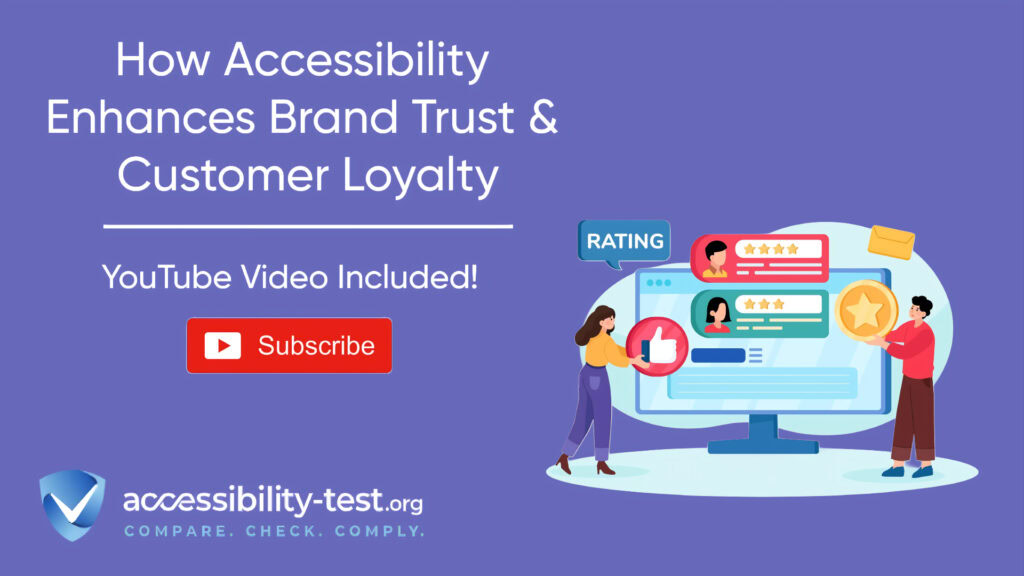
Actionable Steps to Improve Accessibility and SEO Today
Now that we understand how accessibility and SEO work together in Google’s 2025 algorithm environment, let’s focus on practical steps you can take right now to improve both aspects of your website:
1. Conduct an Accessibility and SEO Audit
Start by evaluating your current status. Use tools like:
- Lighthouse in Google Chrome DevTools for both accessibility and SEO checks
- WAVE (Web Accessibility Evaluation Tool) for identifying accessibility issues
- Google’s PageSpeed Insights for Core Web Vitals assessment
These tools will help you identify problems that impact both accessibility and search rankings.
2. Fix Heading Structure
Review and fix your heading structure to create a logical hierarchy:
- Use only one H1 tag per page that clearly describes the page content
- Follow with H2 tags for main sections
- Use H3-H6 tags for subsections
- Never skip heading levels (like going from H2 directly to H4)
This improvement can lead to a 41% boost in crawl efficiency while making your content more navigable for screen reader users.
3. Optimize Images
For every image on your site:
- Add descriptive alt text that explains the image content and purpose
- Compress images to reduce file size without losing quality
- Consider using next-gen formats like WebP
- Ensure images are responsive for different screen sizes
These changes improve accessibility for visually impaired users while also boosting page speed and SEO.
4. Enhance Site Navigation
Make your site navigation more accessible and search-friendly:
- Ensure all navigation is accessible via keyboard
- Create a logical tab order for interactive elements
- Add “skip to content” links to help screen reader users bypass repetitive navigation
- Use breadcrumbs to show page location within your site structure
Better navigation helps all users find content while also helping search engines understand your site structure.
5. Improve Mobile Experience
With Google’s continued focus on mobile-first indexing in 2025:
- Test your site on multiple mobile devices
- Ensure touch targets (buttons, links) are at least 44×44 pixels
- Check that text is readable without zooming
- Verify forms work properly on mobile devices
These improvements benefit both mobile users and your search rankings.
6. Optimize Page Speed
Fast-loading pages are essential for both accessibility and SEO:
- Minimize HTTP requests
- Enable browser caching
- Optimize CSS delivery
- Remove render-blocking JavaScript
- Use a content delivery network (CDN) if appropriate
Each speed improvement contributes to better user experience and search performance.
7. Create Accessible Forms
Forms are often problematic for users with disabilities:
- Add clear labels for all form fields
- Provide helpful error messages
- Use ARIA attributes where needed
- Allow users to navigate forms using keyboard only
Accessible forms lead to higher completion rates, which improves conversion metrics and sends positive signals to Google.
8. Add Transcripts and Captions
For all audio and video content:
- Provide accurate transcripts
- Add closed captions to videos
- Consider including descriptive audio for important visual content
This makes your multimedia content accessible while also providing text that search engines can index.
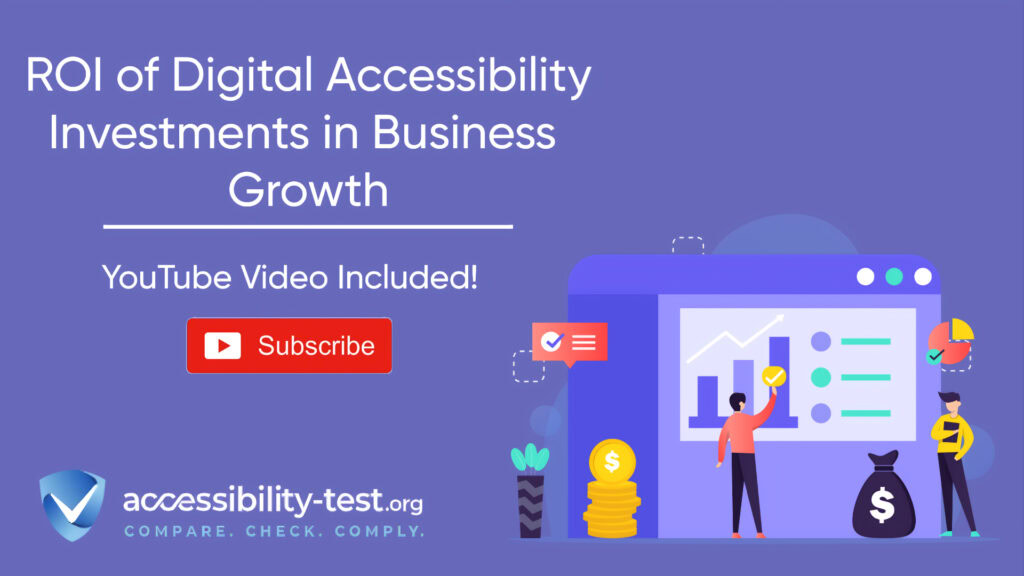
Using Automated Tools for Quick Insights (Accessibility-Test.org Scanner)
Automated testing tools provide a fast way to identify many common accessibility issues. They can quickly scan your website and point out problems that might be difficult for people with disabilities to overcome.
Visit Our Tools Comparison Page!

Next Steps | Taking Action Today
Now that you understand the importance of website accessibility and how to approach it, it’s time to take action. Here are some concrete steps you can take today:
- Run a free accessibility scan – Use the Accessibility-Test.org scanner to get a quick assessment of your website’s current state.
- Fix the easy issues first – Address simple problems like missing alt text and color contrast to make immediate improvements.
- Create an accessibility statement – Add a page to your website explaining your commitment to accessibility and how users can report problems.
- Train key team members – Ensure that content creators and developers understand basic accessibility principles.
- Budget for accessibility – Include accessibility in your website maintenance and development budgets.
Remember, every step you take toward better accessibility reduces your legal risk and improves the experience for all your users.
Run a FREE scan to check compliance and get recommendations to reduce risks of lawsuits
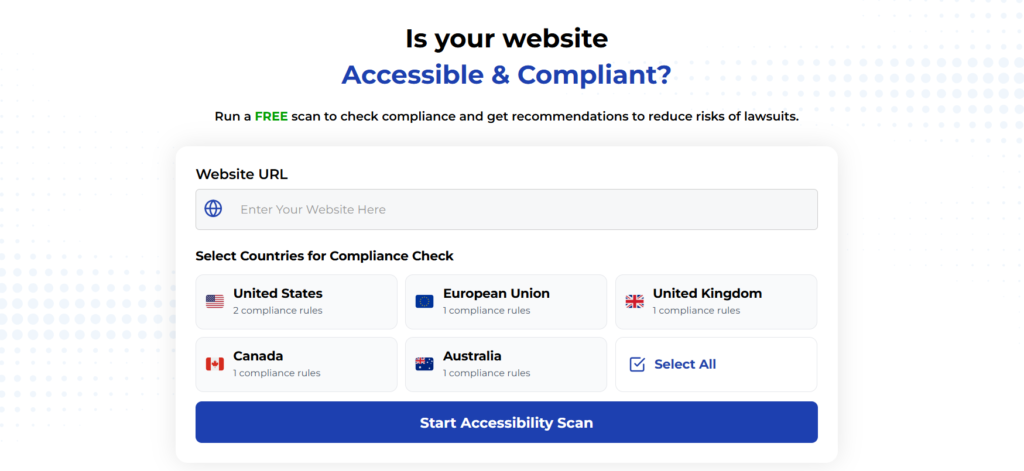
As we move through 2025, the relationship between accessibility and SEO will only grow stronger. Google’s algorithm updates continue to evolve toward rewarding websites that provide the best possible experience for all users, regardless of their abilities.
This trend reflects a broader shift in digital strategy—accessibility is no longer a separate consideration but an integral part of creating high-quality websites that perform well in search results. The technical overlaps between accessibility best practices and SEO fundamentals make this integration not just logical but essential for online success.
Businesses that recognize and act on this connection gain multiple advantages: better search visibility, expanded audience reach, reduced legal risk, and improved user engagement. With accessible websites driving 37% higher organic traffic and lowering bounce rates by 41%, the business case for accessibility-enhanced SEO is clear.
Moreover, with the European Accessibility Act (EAA) coming into full effect in June 2025 and similar regulations being adopted worldwide, legal compliance and search performance are becoming increasingly aligned. This regulatory environment further reinforces the importance of building accessibility into your digital strategy from the ground up.
Looking ahead, we can expect Google’s algorithm to place even greater emphasis on user experience signals, with accessibility serving as a core component of how search engines evaluate website quality. Businesses that invest in accessibility now will be well-positioned to maintain and improve their search rankings as these algorithmic shifts continue.
The message is clear: in 2025 and beyond, accessibility and SEO success go hand in hand. By embracing this connection and implementing the actionable steps outlined in this article, you can create a website that works better for all users while achieving better visibility in search results.
Want to know where your website stands? Run a FREE scan to check compliance and get recommendations to reduce risks of lawsuits. Our accessibility scanner will identify issues that could be impacting both your website’s accessibility and its search rankings. Take the first step toward a more accessible, SEO-friendly website today!



